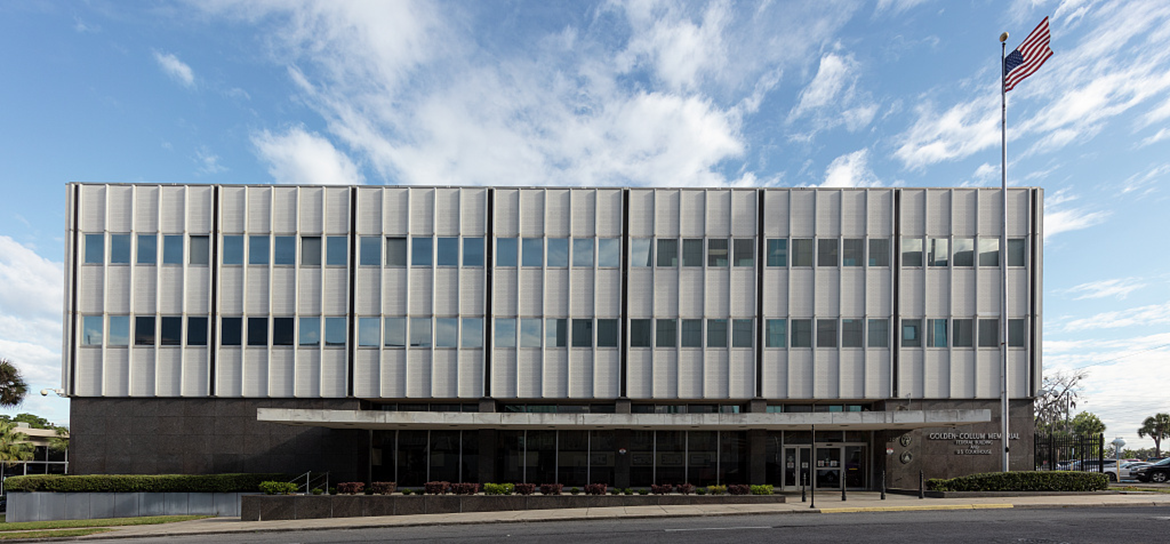
A new life for GSA’s historic buildings
Post filed in: Historic Buildings | Historic Preservation | Historic Preservation Month
Every May, GSA recognizes National Preservation Month by celebrating the important roles our historic buildings play in fulfilling GSA’s mission to provide the best customer experience and value in real estate.
Currently, 515 historic GSA buildings are listed in or eligible for the National Register of Historic Places, the official list of the nation’s historic places worthy of preservation. Authorized by the National Historic Preservation Act of 1966, the National Park Service’s National Register of Historic Places is part of a national program to coordinate and support public and private efforts to identify, evaluate, and protect America’s historic and archeological resources.
Recent additions to the National Register reflect GSA’s origins in post-WWII, when the agency undertook a massive reuse and build campaign to address a shortage in modern federal office space. GSA completed more than 700 construction projects in the three decades after its founding in 1949.
At GSA, one third of the agency’s owned portfolio are historic buildings. Among the square footage the agency rents, 40 percent is available in historic buildings.
Three such projects in Florida are: the Federal Building and U.S. Courthouse in Gainesville, the Robert L. Timberlake, Jr. Federal Building in Tampa, and Golden-Collum Memorial Federal Building and U.S. Courthouse in Ocala. Completed in the 1960s, the buildings exhibit exposed concrete, high-quality stone, and clean-line geometry that stand in contrast to designs of earlier eras.
Preserving history in many ways
All three were listed in the National Register in 2022 for their quintessential Modern designs.
GSA has long been a federal leader using Section 111 authority in the National Historic Preservation Act, allowing federal agencies to outlease excess space in historic properties to non-federal entities, and then reinvest these earnings in the historic building inventory.
One such reinvestment is the recently completed restoration of the Sasabe Land Port of Entry in Arizona, which will extend the building’s service life for decades.
Some leases highlight community and educational partnerships for special events, including mock trials at the Jose V. Toledo U.S. Courthouse in Old San Juan, Puerto Rico, and a graduation ceremony at the Alexander Hamilton U.S. Custom House in New York. Others generate revenue from the entertainment industry like a film that used the U.S. Post Office and Courthouse in Tulsa, Oklahoma.
Looking forward
Throughout fiscal year 2023, GSA is engaging real estate industry experts to analyze the historic inventory to help grow the number of leases. The strongest leasing candidates will be identified that can generate maximized revenue in their local markets.
In a yearlong partnership with the Advisory Council on Historic Preservation, GSA achieved a compliance exemption for some routine activities that will lead to time and money saved nationwide. The exemption underscores the essential role of GSA’s regional preservation teams to ensure that work in historic buildings is done by skilled vendors in ways that protect historic features, finishes, and materials. Regular maintenance is key to preserving historic buildings.
GSA constantly pursues cost effective and innovative stewardship solutions to maintain historic buildings for our clients and the communities they serve. As we celebrate National Historic Preservation Month throughout May, we reaffirm our commitment to the preservation ethic as a critical component of GSA’s mission to deliver the best value in federal real estate.
To learn more, visit the GSA Historic Preservation webpage.

 U.S. General Services Administration
U.S. General Services Administration
